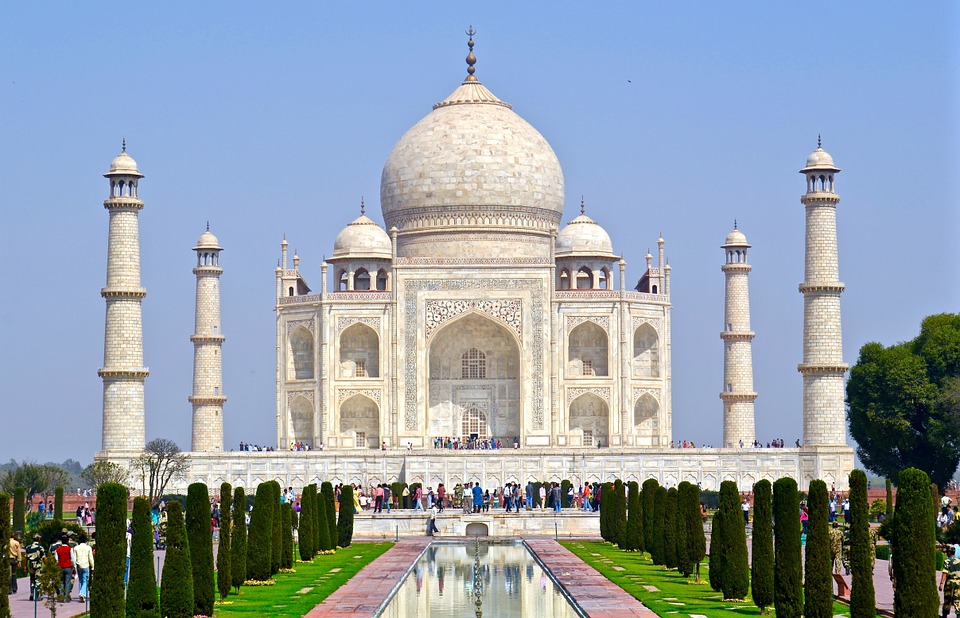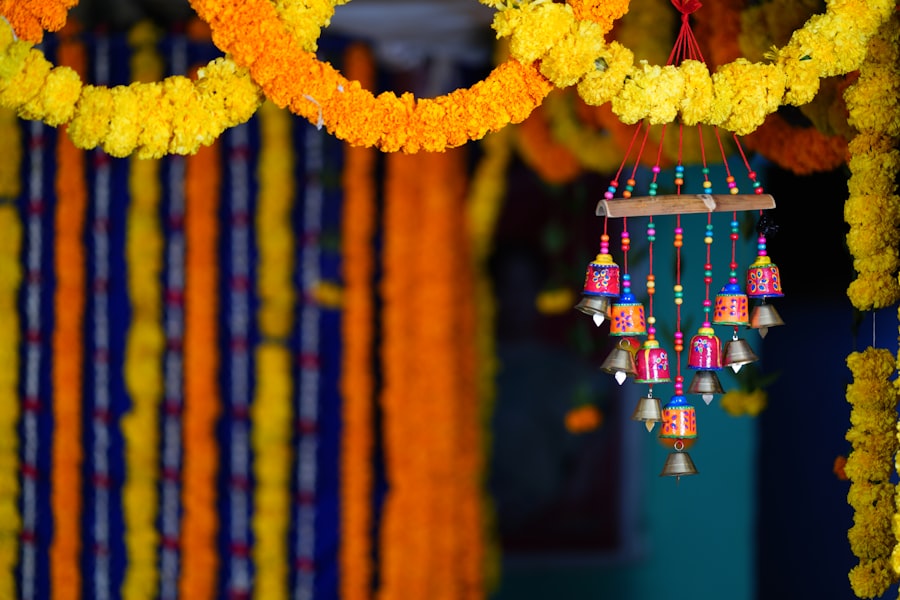
India is a land of diversity and heritage, with a rich tapestry of culture and traditions that have been passed down through generations. From its vibrant festivals to its ancient temples, from its culinary delights to its spiritual practices, India offers a treasure trove of experiences for those who seek to explore its cultural heritage. In this article, we will delve into the colourful festivals, artistic treasures, culinary delights, spiritual legacy, architectural marvels, musical heritage, traditional crafts, natural wonders, and modern innovations that make India truly incredible.
Summary
- India is a land of diversity and heritage, with a rich cultural history.
- The colourful festivals of India celebrate life and spirituality and are a sight to behold.
- India’s artistic treasures range from ancient temples to modern museums, showcasing the country’s creativity and innovation.
- The culinary delights of India offer a journey through spices and flavours, with something to suit every palate.
- India’s spiritual legacy is evident in practices such as yoga and meditation, which have gained popularity worldwide.
The Colourful Festivals of India
India is known for its vibrant and lively festivals that are celebrated with great enthusiasm and fervour. One of the most famous festivals is Holi, also known as the Festival of Colors. During Holi, people come together to throw coloured powders and water at each other, symbolizing the victory of good over evil and the arrival of spring. Diwali, or the Festival of Lights, is another significant festival in India. It celebrates the victory of light over darkness and good over evil. During Diwali, people light oil lamps and candles, decorate their homes with colourful rangoli designs, and burst fireworks. Durga Puja is yet another important festival in India, particularly in the state of West Bengal. It is dedicated to the worship of Goddess Durga and celebrates her victory over the buffalo demon Mahishasura.
These festivals hold great significance in Indian culture as they bring people together from all walks of life and celebrate life itself. They are occasions for family gatherings, feasting, and exchanging gifts. They also provide an opportunity for people to forget their differences and come together in a spirit of unity and joy. The festivals are marked by music, dance, and elaborate rituals that showcase the rich cultural heritage of India.
The Artistic Treasures of India
India is home to a vast array of artistic treasures, both ancient and modern. The country is dotted with ancient temples that are architectural marvels in themselves. These temples are not only places of worship but also showcase intricate carvings and sculptures that depict stories from Hindu mythology. The Khajuraho temples in Madhya Pradesh, the Sun Temple in Konark, and the Meenakshi Temple in Tamil Nadu are just a few examples of the architectural wonders that India has to offer.
In addition to ancient temples, India is also known for its diverse art forms. Madhubani painting from Bihar, Warli painting from Maharashtra, and Pattachitra painting from Odisha are just a few examples of the rich artistic traditions that have been passed down through generations. These art forms often depict scenes from mythology or everyday life and are characterized by their vibrant colours and intricate detailing. They reflect India’s rich history and culture and provide a glimpse into the artistic prowess of its people.
The Culinary Delights of India
| Dish | Region | Ingredients | Spice Level | Popularity |
|---|---|---|---|---|
| Biryani | Hyderabad | Rice, Meat, Spices | Medium | Very Popular |
| Butter Chicken | Punjab | Chicken, Tomatoes, Cream | Mild | Popular |
| Dosa | South India | Rice, Lentils | Mild | Very Popular |
| Chaat | North India | Potatoes, Chickpeas, Yogurt | Medium | Popular |
| Rogan Josh | Kashmir | Lamb, Tomatoes, Spices | Medium | Popular |
Indian cuisine is renowned for its bold flavours and aromatic spices. The use of spices such as cumin, coriander, turmeric, and cardamom gives Indian food its distinctive taste. Each region in India has its own unique culinary traditions and signature dishes. Biryani, a fragrant rice dish cooked with meat or vegetables, is a popular dish in the northern part of India. Dosa, a thin pancake made from fermented rice and lentil batter, is a staple in the southern part of India. Butter chicken, a creamy tomato-based curry, is a favourite among food lovers all over the country.
Food is not just about sustenance in Indian culture; it is an integral part of hospitality and social gatherings. Sharing a meal with family and friends is considered an act of love and generosity. Indian cuisine reflects the diversity of the country itself, with each dish telling a story of its own.
The Spiritual Legacy of India
India is often referred to as the birthplace of spirituality, with ancient practices such as yoga and meditation originating in this land. Yoga is a holistic practice that combines physical postures, breathing exercises, and meditation to promote physical and mental well-being. It has gained popularity all over the world for its numerous health benefits. Meditation, on the other hand, is a practice that involves focusing the mind and achieving a state of deep relaxation and inner peace.
Spirituality is deeply ingrained in Indian culture, with people seeking solace and enlightenment through various spiritual practices. Temples, ashrams, and holy sites are scattered across the country, attracting millions of devotees and seekers every year. The spiritual legacy of India continues to thrive, with people from all over the world coming to India to learn and experience these ancient practices.
The Architectural Marvels of India

India is home to some of the most iconic architectural marvels in the world. The Taj Mahal in Agra is perhaps the most famous example. Built by Emperor Shah Jahan in memory of his beloved wife Mumtaz Mahal, it is considered a masterpiece of Mughal architecture. The Red Fort in Delhi is another architectural gem that showcases the grandeur and opulence of the Mughal era. The intricate carvings, delicate marble work, and symmetrical designs are a testament to the architectural prowess of the time.
India’s architectural heritage is not limited to Mughal architecture alone. The country boasts a diverse range of architectural styles, influenced by various dynasties and empires that have ruled over it throughout history. From the ancient rock-cut caves of Ajanta and Ellora to the majestic palaces of Rajasthan, each structure tells a story of its own and reflects India’s rich history and culture.
The Musical Heritage of India
Music is an integral part of Indian culture and entertainment. India has a rich musical heritage that dates back thousands of years. Classical music, with its intricate melodies and complex rhythms, is considered the backbone of Indian music. It is divided into two main traditions – Hindustani classical music in the north and Carnatic classical music in the south. Both traditions have their own unique styles and repertoire.
In addition to classical music, India is also known for its vibrant film industry, Bollywood. Bollywood music is a fusion of various musical styles, including Indian classical, folk, and Western influences. It is characterized by catchy tunes, lively rhythms, and soulful lyrics. Famous musicians and composers such as Ravi Shankar, A.R. Rahman, and Lata Mangeshkar have made significant contributions to the Indian music industry and have gained international recognition.
The Traditional Crafts of India
India has a rich tradition of craftsmanship and skilled artisans who create beautiful handicrafts using traditional techniques. From pottery to weaving to embroidery, each craft reflects the unique culture and traditions of its region. The blue pottery of Jaipur, the silk sarees of Varanasi, and the intricate embroidery of Kutch are just a few examples of the diverse crafts that can be found in India.
These crafts are not just objects of beauty; they also provide livelihoods for countless artisans across the country. Many craft forms have been passed down through generations, with families specializing in a particular craft for centuries. These crafts are a testament to India’s rich cultural heritage and are highly valued both within the country and internationally.
The Natural Wonders of India
India is blessed with an abundance of natural beauty, from majestic mountains to pristine beaches to wildlife reserves teeming with biodiversity. The Himalayas in the north are home to some of the highest peaks in the world, including Mount Everest. The beaches of Goa and Kerala attract tourists from all over the world with their golden sands and crystal-clear waters. Wildlife reserves such as Ranthambore National Park and Kaziranga National Park are havens for rare and endangered species, including the majestic Bengal tiger and the one-horned rhinoceros.
Preserving India’s natural wonders is of utmost importance, not only for their ecological value but also for their cultural and spiritual significance. Many of these natural sites are considered sacred by the local communities and are an integral part of their religious and cultural practices. It is essential to strike a balance between development and conservation to ensure that future generations can continue to enjoy the beauty of Incredible India.
The Modern India
India is not just a land of ancient traditions and cultural heritage; it is also a country that is embracing modernity and innovation. In recent years, India has witnessed a surge in startups and entrepreneurship, with many young entrepreneurs making their mark in various fields. From technology to healthcare to renewable energy, Indian startups are at the forefront of innovation and are making significant contributions to the global economy.
The government of India has also launched various initiatives to promote innovation and entrepreneurship, such as Startup India and Make in India. These initiatives aim to create a conducive environment for startups to thrive and contribute to the country’s economic growth. At the same time, India is mindful of preserving its traditions and cultural heritage, ensuring that modernity does not come at the cost of its rich cultural legacy.
India’s diversity and heritage make it a truly incredible country to explore. From its colourful festivals to its artistic treasures, from its culinary delights to its spiritual practices, from its architectural marvels to its musical heritage, from its traditional crafts to its natural wonders, India offers a wealth of experiences for those who seek to delve into its cultural tapestry. It is a land where ancient traditions coexist with modern innovations, where spirituality is intertwined with everyday life, and where hospitality knows no bounds. So come, visit Incredible India, and immerse yourself in its rich culture and traditions.
FAQs
What is India?
India is a country located in South Asia. It is the seventh-largest country in the world by land area and the second-most populous country, with over 1.3 billion people.
What is the capital of India?
The capital of India is New Delhi.
What is the official language of India?
The official language of India is Hindi, but there are 22 other official languages recognized by the Indian Constitution.
What is the currency of India?
The currency of India is the Indian rupee (INR).
What is the religion of India?
India is a secular country, but the majority of the population practices Hinduism. Other major religions in India include Islam, Christianity, Sikhism, Buddhism, and Jainism.
What is the literacy rate in India?
According to the 2011 census, the literacy rate in India is 74.04%.
What is the economy of India like?
India has a mixed economy, with agriculture, manufacturing, and services sectors contributing to its GDP. It is the world’s sixth-largest economy by nominal GDP and the third-largest by purchasing power parity.
What are some famous landmarks in India?
Some famous landmarks in India include the Taj Mahal, the Red Fort, the Golden Temple, and the Gateway of India.


